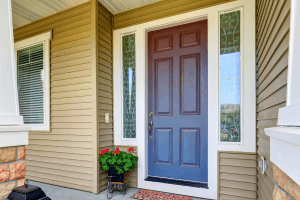Old sash boxes sometimes need to be removed. Window removal in itself can be a complicated process, let alone box sash removal. Box windows have sashes that are set into the wall. If you try removing sash windows and the sash box yourself, you could potentially end up causing some severe damage that will end up costing you more to get fixed than if you got a professional to do the job in the first place.
This is why it’s recommended that whenever you are dealing with removing the window from your home, it’s best to get a professional to do the job. The process is a little more specialized than just getting the window lifted out. So, before you jump to an online search on “what is box removal,” it might be wise to search for a Canglow window professional first.
How To Remove Window Sash
With window removal cost and sash removal on box windows being fairly reasonable, getting a pro will make it seem easy.
- The work site is initially prepared with sheets and other protection so that there will be no trace of work even being done.
- The window installer will start the process of removing the window. Glazing that can be removed from the box windows will be lifted out and set aside.
- The weights that are on the sashes are then disconnected and also lifted out.
- The frame surrounding the window is cut up into sections so that it can be unscrewed and lifted out.
- After the window has been taken out, the window installer will begin to remove window sash boxes. Because the boxes are firmly in the wall, they need to be removed very delicately so that no damage will occur. This step is where most people might want to get a professional involved if they are trying to do it themselves.
- Two angled cuts are then made into the box at around a third of the height on one side. Doing this will free up the middle section of the sash box. The sash boxes in the box windows can now be collapsed down and taken out of the wall.
- The sill can now be removed, and this will leave a full opening.
- The aperture is then cleaned of any dust or dirt, and a damp proof course is applied on the inside recess so that no damage will occur to the new frame.
- For an added protection measure, the window installer will cover all five surfaces of the recess with uPVC.
- The lining is then sealed with silicone.

